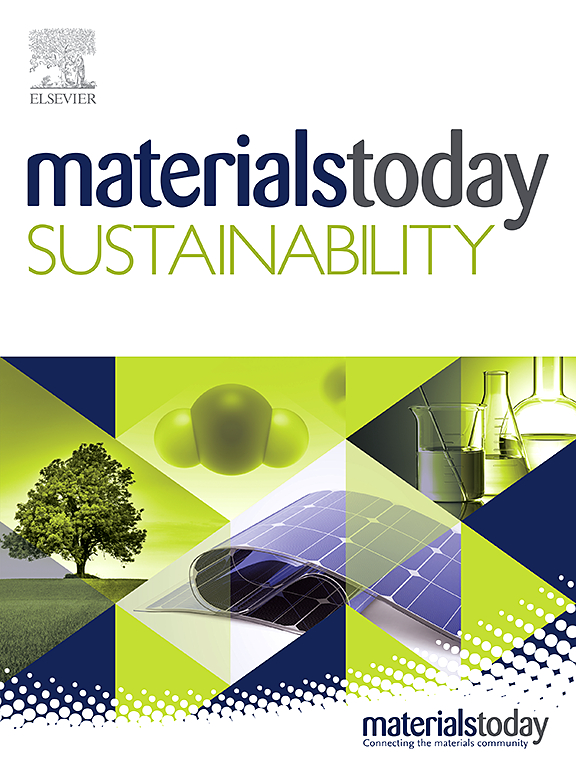回填用粗骨料和地铁盾构土控制低强度材料的微观结构和力学性能
IF 7.9
3区 材料科学
Q1 GREEN & SUSTAINABLE SCIENCE & TECHNOLOGY
引用次数: 0
摘要
在本研究中,提出了一种可持续再利用地铁盾构土(MSS)的方法,将拆除和改造废物(DRW)结合起来,生产符合既定工程标准的可控低强度材料(CLSM)。采用正交试验设计,系统研究了不同DRW含量对CLSM和易性和力学性能的影响。研究结果表明,DRW的加入可以显著改善颗粒分布,从而提高材料的流动性和抗压强度。特别是混合料的流动性可由155 mm提高到230 mm, 28天抗压强度达到1.81 MPa。微观结构观察表明,DRW的引入可以改变孔隙结构,使基体更加细化和优化。此外,可以检测到较高的水合硅酸钙(C-S-H)凝胶和钙矾石的存在,这是由于DRW中的硫酸盐含量所致。这种硫酸盐诱导的地层导致强度增加,进一步验证了drw改性MSS作为一种有前途的、环保的CLSM解决方案的适用性。这项工作提供了这种创新材料作为一种可行的、可持续的建筑解决方案的潜力,以解决土木工程应用中的废物回收和性能优化问题。本文章由计算机程序翻译,如有差异,请以英文原文为准。
Microstructure and mechanical properties of controlled low-strength materials with recycled coarse aggregate and metro shield spoil for backfill applications
In this study, a sustainable approach is proposed for reusing metro shield spoil (MSS) by the incorporation of with demolition and renovation waste (DRW) to produce controlled low-strength material (CLSM) that complies with established engineering standards. With an orthogonal experimental design, the effects of various DRW content on the workability and mechanical properties of CLSM are systematically investigated. The findings demonstrate that the inclusion of DRW can remarkably enhance the particle distribution, leading to improvements in flowability and compressive strength. Particularly, the flowability of mixture can be increased from 155 mm to 230 mm, and the 28-day compressive strength reaches 1.81 MPa. Microstructure observation reveals that the introduction of DRW can bring about the change of pore structure, resulting in a more refined and optimized matrix. Additionally, a higher presence of calcium-silicate-hydrate (C–S–H) gel and ettringite can be detected, which is attributed to the sulfate content in DRW. This sulfate-induced formation leads to an increase in strength, further validating the suitability of DRW-modified MSS as a promising, eco-friendly solution to produce CLSM. This work provides the potential of this innovative material as a viable, sustainable construction solution to address both waste recycling and performance optimization in civil engineering applications.
求助全文
通过发布文献求助,成功后即可免费获取论文全文。
去求助
来源期刊

Materials Today Sustainability
Multiple-
CiteScore
5.80
自引率
6.40%
发文量
174
审稿时长
32 days
期刊介绍:
Materials Today Sustainability is a multi-disciplinary journal covering all aspects of sustainability through materials science.
With a rapidly increasing population with growing demands, materials science has emerged as a critical discipline toward protecting of the environment and ensuring the long term survival of future generations.
 求助内容:
求助内容: 应助结果提醒方式:
应助结果提醒方式:


